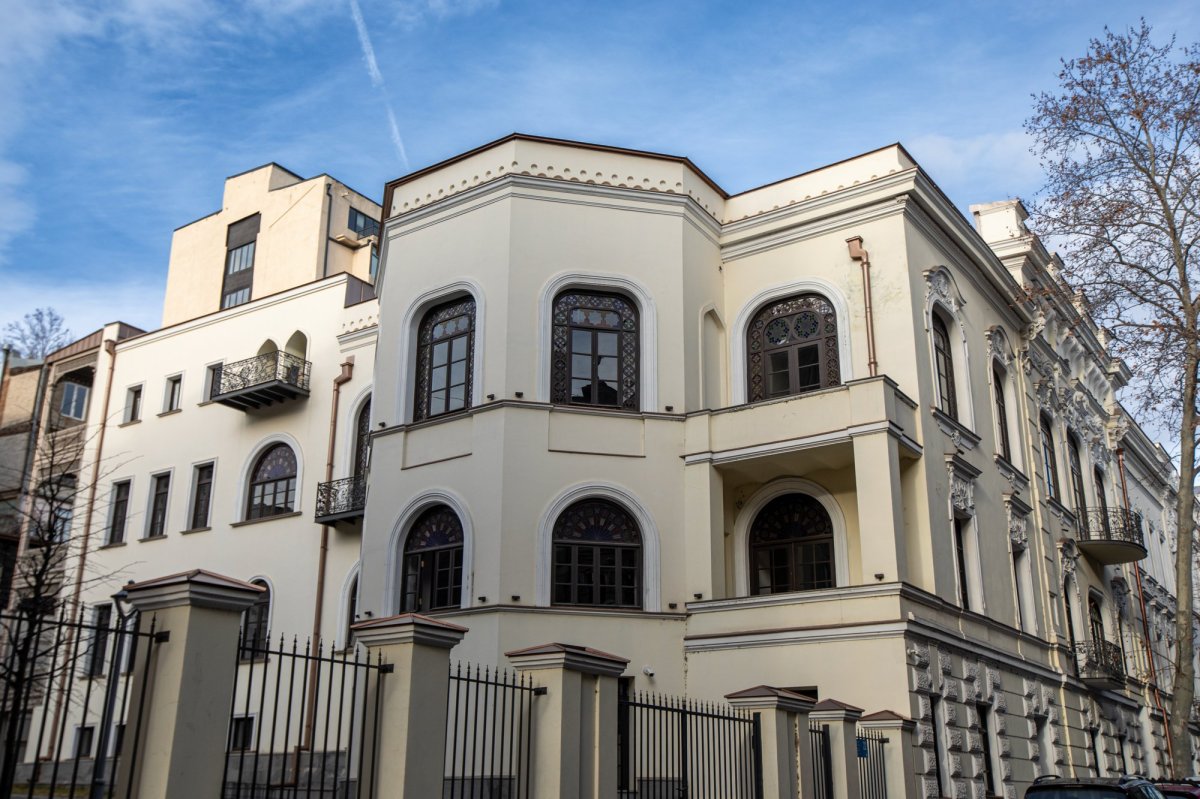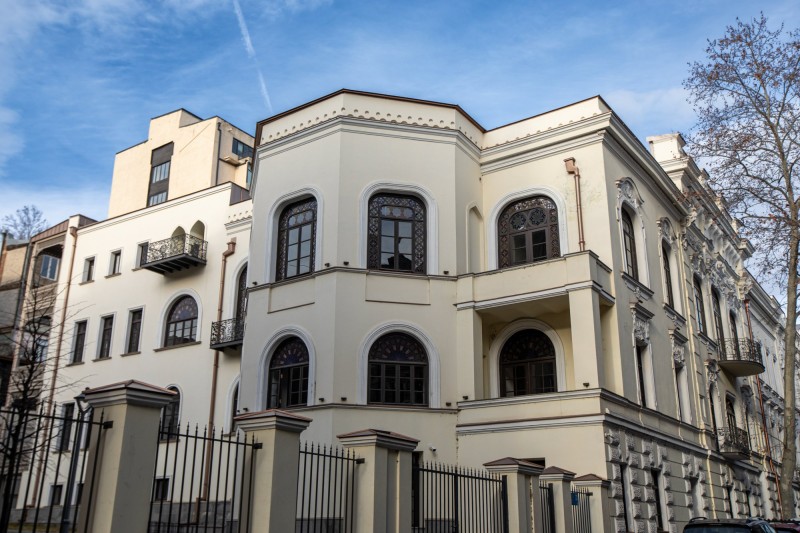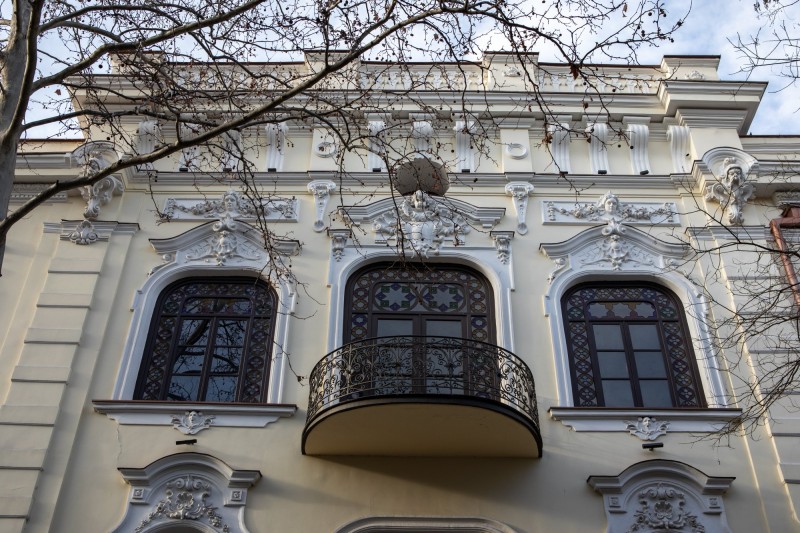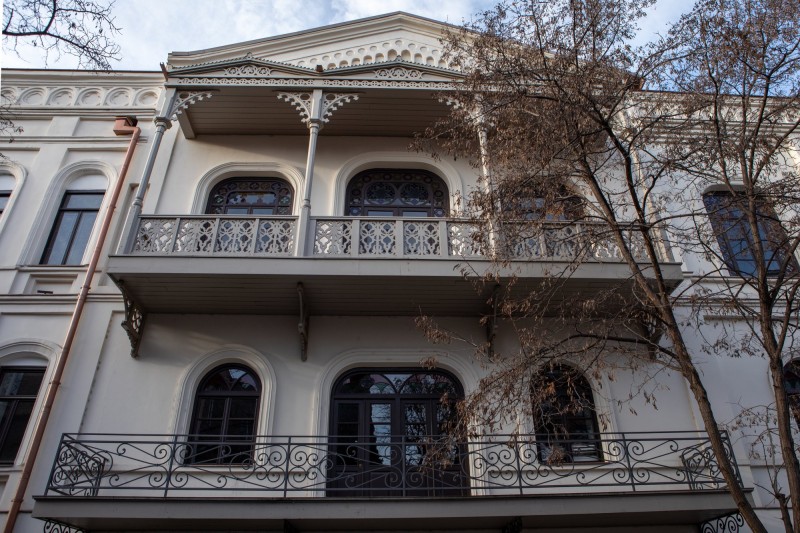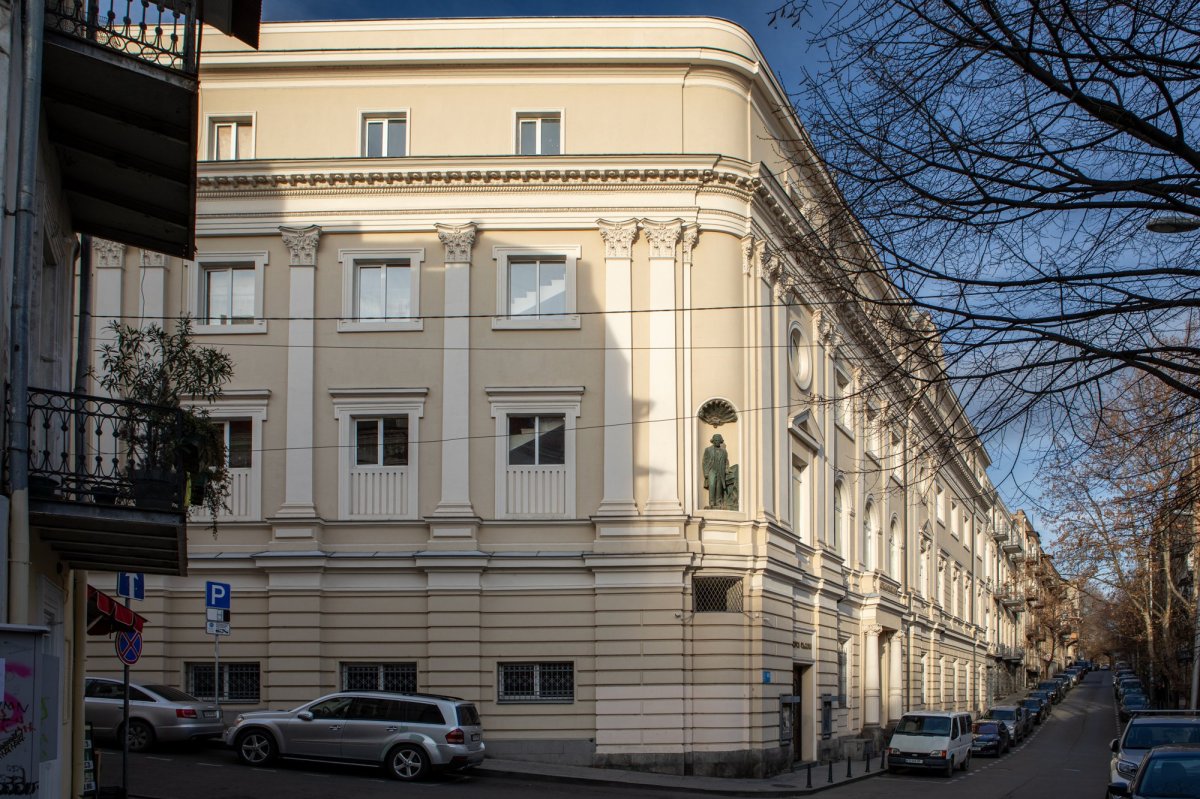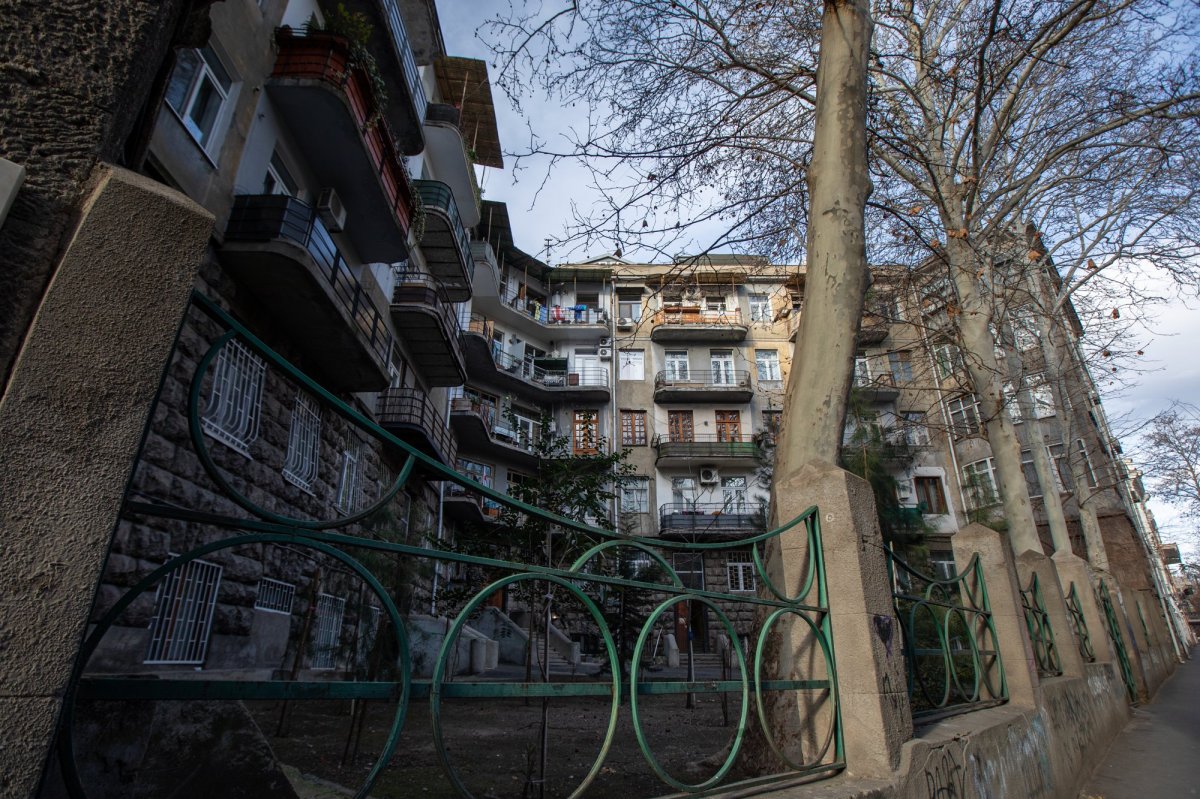
Information in details
The building of the Academy of Arts, located at 22, Griboedov St., is one of the outstanding buildings that play an important role in the historical memory of the city. The area where the building is located was historically a suburb. In the first decades of the 19th century, the outer district became the residential area of the aristocracy. Part of the Georgian nobility took advantage of the new era and they also started building houses in their estates. A. Griboedov Street was formed in the first half of the 19th century, in 1843 and was named Commandant Street. The house of the city commandant stood here, and the name of the almost uninhabited street can be explained in this way. The street was named after A. Griboedov in 1879 and has survived to this day. It is also worth noting that this street is also mentioned by the name of Arshakun in some places. This can be explained by the fact that in the middle of the 19th century, a palace built by the architect Grigol Ivanov with its church appeared here, the owner of which was a representative of the Arshakun family. We don't know if the original owner of our research building was related to the Armenian Arshakunians (Arshakuns) from the Arshakid royal dynasty of Parthian origin in Iran, who ruled the royal throne of Armenia until the beginning of the 5th century. However, we know for sure that Arshakun from Tbilisi, the owner of the research house, was an honorary citizen of Tbilisi. This is how he is mentioned in the letters of the projects drawn up by Grigol Ivanov in 1856 and 1857. In the middle of the 19th century, the honorary citizenship of Tbilisi was granted by property or by descent. Apart from the palace on Griboedov Street, the Arshakuns also owned other houses in Tbilisi. Vardan Arshakun himself could not see the completion of the construction of the palace, he died in 1862. The palace was owned by his family for a while, and then, in 1869-86, Tbilisi's "Kružok" (Тифлисский кружок) was located in the Arshakun Palace. It was an entertainment club with a charter approved by the Governor of the Caucasus. The members of the club were government employees, retired persons and their family members. Club members were given the opportunity to familiarize themselves with literature and the press; Balls, family evenings, dances, stage performances were held. In accordance with the function, a library room, a hotel, a dining room, a billiard room, a dance hall and a theater hall were allocated in the building. As it turns out, Tbilisi "Kruzhok" has been successfully operating in this building for years. It is noteworthy that by 1886, the Arshakuns are no longer seen as the owners of the building, and at the end of the 19th century, Nino Kobulashvili appears as the owner of one part of the building, who commissioned the architect Simon Kldiashvili to reconstruct it. At the beginning of the 20th century, an art school was opened in the old Arshakun house, on the basis of which the Tbilisi Art Academy was founded in 1922, which was the only one in the Caucasus. The artistic solution of the facade of the building is eclectic. Its artistic treatment is based on classical, Islamic and baroque stylization. As we have already mentioned, the right part of the street facade of the building built according to the project drawn up by Grigol Ivanov in 1857 has preserved its original appearance better, while the left part has been rebuilt according to the project drawn up by architect Simon Kldiashvili in 1902. The interior of the building is completely unique, containing elements similar to the luxurious decoration of oriental palaces. According to the researchers, these mirrored halls are virtuosically executed by Qajar masters brought specially from Iran and are elaborated with details typical of the interiors of late Iranian palaces. You follow the decorative painting of floral motifs with your eyes, or the walls covered with sculptural plaster ornaments, which remind you of the beauty of white lace. This is where the elegant Persian baroque on the reliefs, the arabesques on the ceiling, the dynamism and flexibility of the decor, the endless repetition of the motif and then turning into a single monumental painting, where not a single landscape or bouquet is repeated, begin. Just a few years ago, the building underwent rehabilitation works, as a result of which its interior was completely renewed. Since 1922, on the initiative of Academician Giorgi Chubinashvili, the Tbilisi State Art Academy has been located in the building.


 თბილისი, Alexander Griboedov Street N22
თბილისი, Alexander Griboedov Street N22
 41.7013603, 44.7926874
41.7013603, 44.7926874

